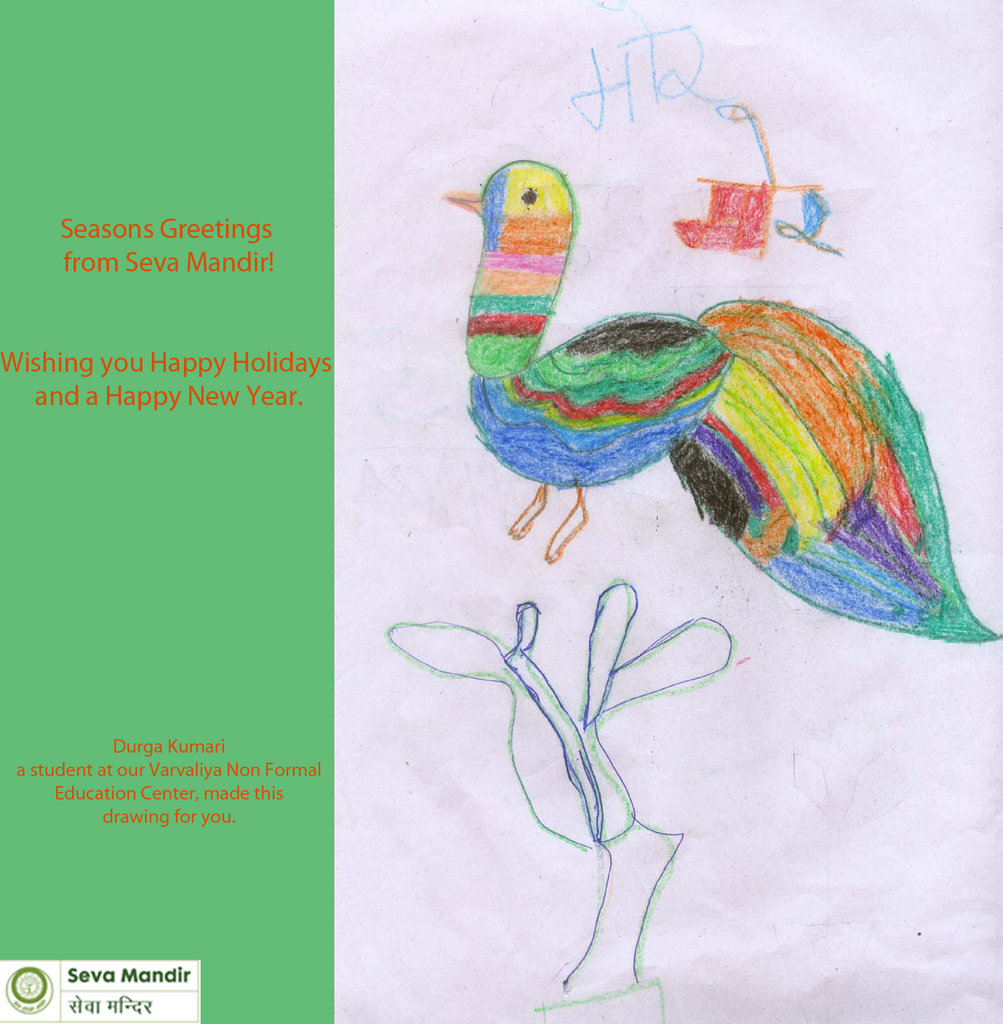![picture of the meeting Lucie attended]()
picture of the meeting Lucie attended
Dear Friends,
Thank you very much for your continuing support. You will be very happy to note that the monsoon has turned out very good in Rajasthan this year. It has rained almost every day this monsoon which is unusual to our region. Usually we receive 20 rainy days in the monsoon. One of the most popular lakes in Udaipur city – Fatehsagar has filled up fully with lots of rain water and is currently over flowing. In villages too some of the streams are flowing and everyone is very happy. Hopefully we will have a good harvest of crops this year. The maize is the major crop and is currently growing in all the fields.
Lucie from France is currently volunteering with us in the Village Institution Program. She has spent few days in this program and is learning more about it every day. I would like to share with you few lines that Lucie has written about this program after her first village visit that she attended recently. She is very impressed by the way villagers are practicing democracy in remote rural areas of Southern Rajasthan. You can find her article below my letter.
We hope you enjoyed reading the report we submitted earlier. We would be absolutely thrilled if you share your comments about the program you are supporting or about the feedback reports we submit.
Once again, many thanks for your valuable support. We will keep you posted on the progress.
With warm regards,
Deepti
----------------------------------------------------------------
My very first week at Village Institutions Programme – Lucie, France
What delineates Seva Mandir from other development organizations might be its tireless effort in arguing importance of local democracy in rural development.
In this way, Seva Mandir started up the Village Institutions Programme or Gram Vikas Committees. The aim of these committees composed of elected villagers is to build an institutional base for strengthening villagers community development. GVCs attempt to fulfill the mission by bringing villagers together to participate to local politic life in investing in social projects. Indeed, the structure of a village is composed of three stages : the villagers community called Samuh, the elected committee named GVC and a common fund : GVK. Interaction between these three entities is the key of collective effectiveness. Seva Mandir’s role is to facilitate this interaction, nor to take part in GVCs’ projects, this post of guidance aims at making villagers accountable of their own development, « don’t give a man a fish, but teach him how to fish instead » said the proverb.
Providing guidance is fussier than leading. Making villagers accountable of their own development is more difficult than providing social services. I realized that while attending at a monthly meeting in the farthest block : Kothra. The meeting brought together five GVCs, its purpose was to submit the concept of a Federation and evaluate its feasibility in sharing experiences of different villages in order to find a collective answer. About twenty villages’ leaders gathered on the ochre carpets, only a few answered to the first speakers’ questions and it took a while to get all of them participating. Then, villagers spoke up, they told us absences of the school teacher, corruption of governmental shops, the corporates that have extracted natural resources without paying…
My first month of work will consist in informing of previous trainings, attending to meeting and talking with Seva Mandir Staff. This period of observation is necessary to understand GVCs functioning better. Thanks to this learning, I would be able to work on a villagers questionnaire, this survey aiming to evaluate quality of previous training and awareness of villagers.
Links:
![Share on Twitter]()
![Share on Facebook]()
